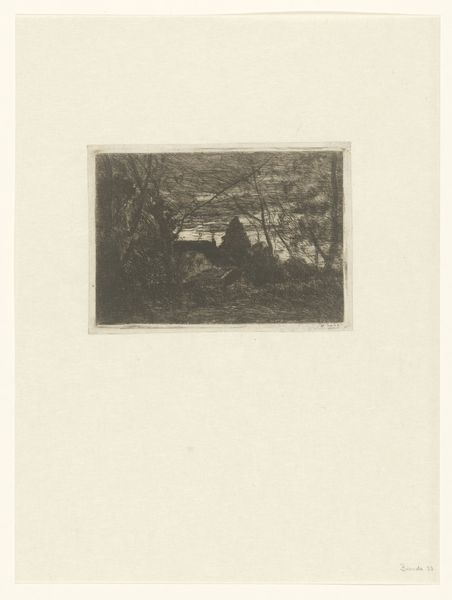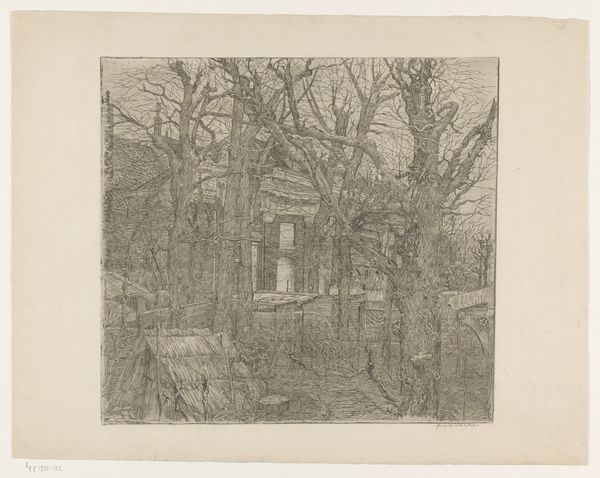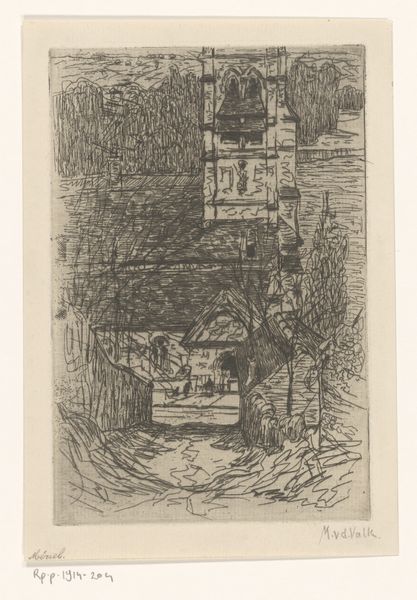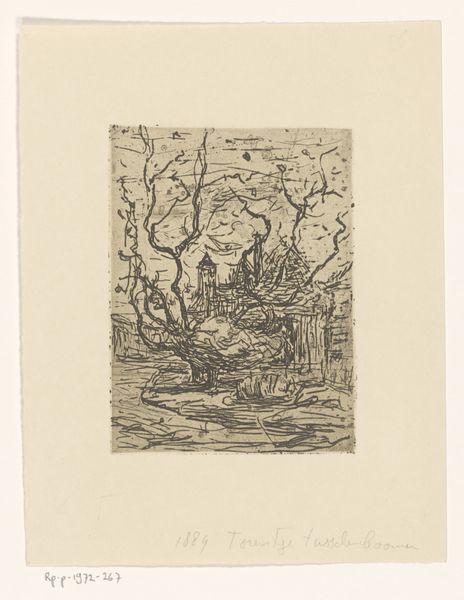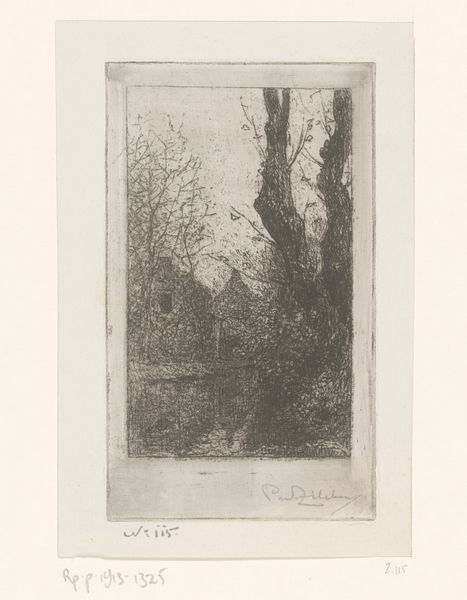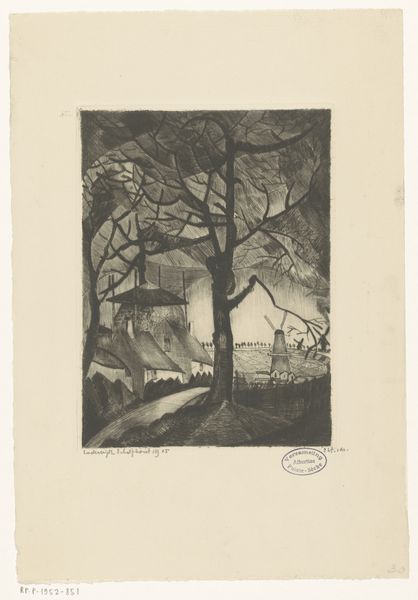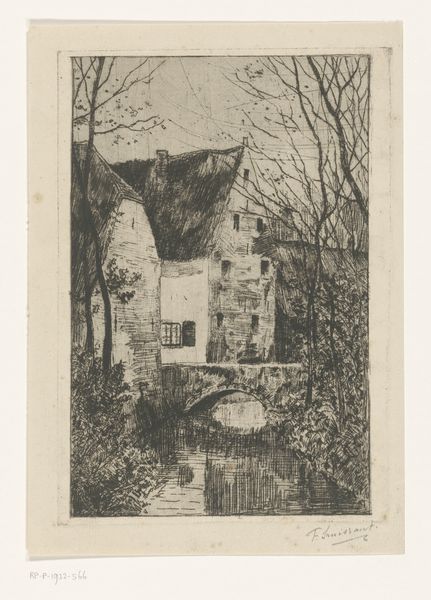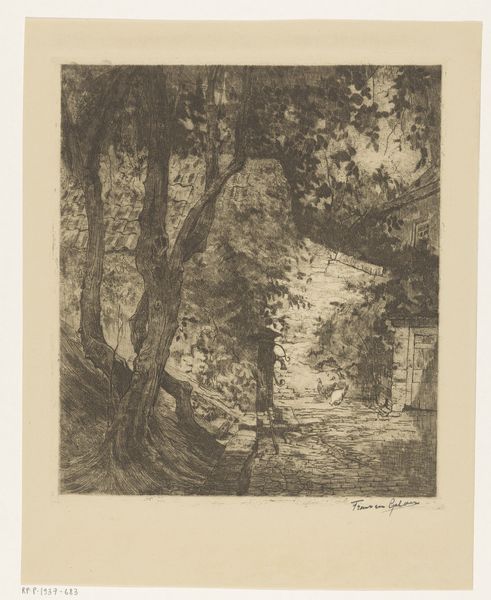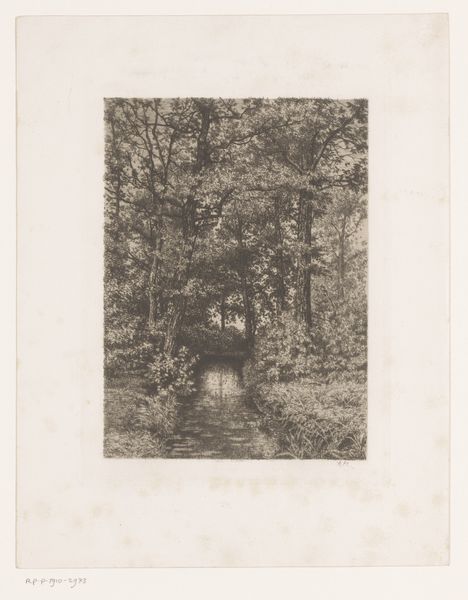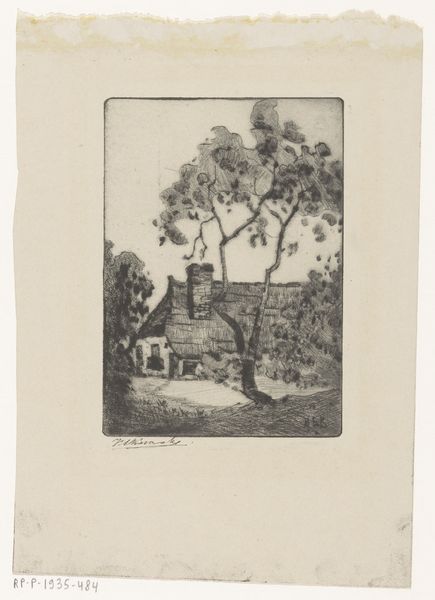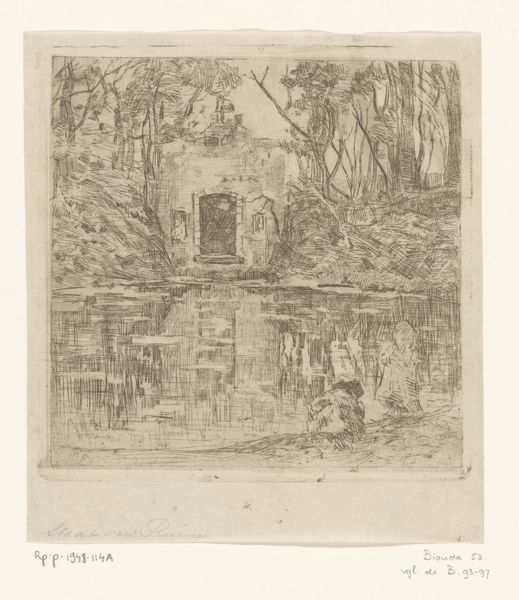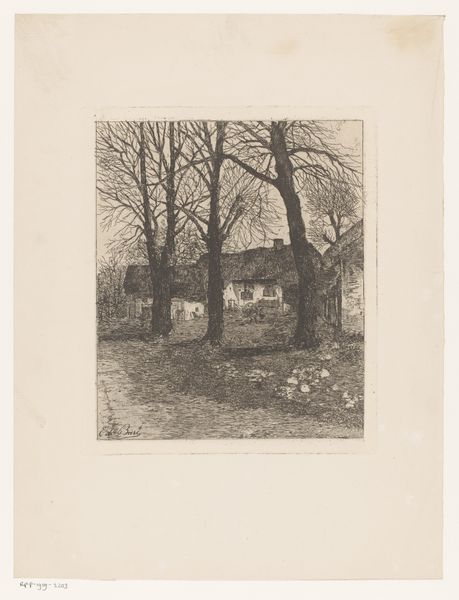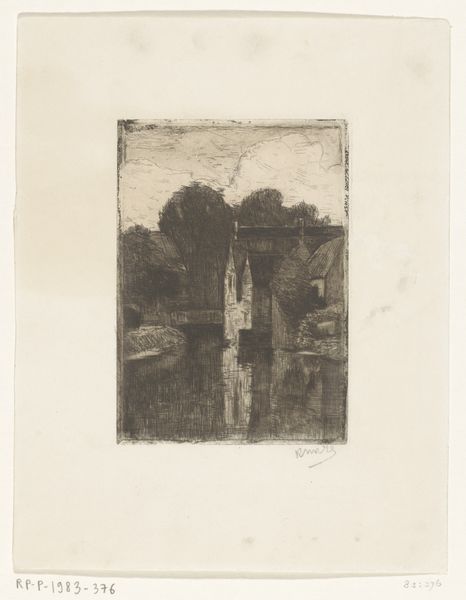
Dimensions: height 292 mm, width 195 mm
Copyright: Rijks Museum: Open Domain
Editor: So, here we have Willem de Zwart's "Ruïne aan een vijver," created around 1896. It's an etching, a print, on what looks like toned paper. It’s so delicate; almost ghostly. What jumps out at you about it? Curator: The method of production is central to its meaning. Etching, a traditionally reproducible medium, ironically captures a unique, decaying structure. De Zwart engages in printmaking to render something in decline, challenging the supposed permanence often associated with architecture and even art itself. The tonal quality achieved through the etching process elevates this view to high art. What about the tonal art qualities strikes you? Editor: Well, it seems the artist uses the etching technique to give it that specific muted tone. Do you think that this was done intentionally? Curator: Absolutely. Consider the social context. Late 19th-century Holland experienced rapid industrialization and urbanization. De Zwart, using a labor-intensive, traditional craft like etching, depicts a ruin, a symbol of the pre-industrial past. It can be read as a subtle commentary on progress, an elegy for a disappearing way of life achieved using modern materials. How do you think the work's emphasis on 'the ruin' plays into this idea? Editor: That's a good point, maybe de Zwart uses the ruin not just as a depiction of landscape but a cultural symbol of something being lost? Curator: Exactly! The artist has actively captured material evidence of change on paper that will potentially remain longer than what it is depicting, posing questions about the value of different kinds of labor. Perhaps that’s why it has resonated to the present day! Editor: I see how analyzing the materials and the production shines light on the complex story of this unassuming landscape. Curator: Precisely! Now you’re thinking like a true materialist.
Comments
No comments
Be the first to comment and join the conversation on the ultimate creative platform.
